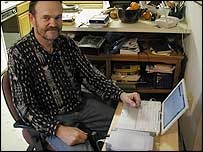I just spent a couple of hours powering through my collection of e-newsletters, tweets and friend-feeds, picking out the things that most interested me, and organizing them (because that is what I like to do...). I won't throw the entire list at you in one fell swoop, but in chunks, starting with (appropriately enough):
- Keeping up (or not)
- If You Abandon Your Online Presence Can you Get it Back? This seems particularly relevant to me. In some ways, I've been "offline" since taking a full time job at GEO back in early 2006. Then after my layoff last April, I've been pretty internally focused and not at all tracking anything of a professional nature. So it was with some relief that I read a similar story from Shannon Paul, who had her own set of life changes this year:
I discovered fear can be paralyzing — not just with real life connections, but also with those made online. I’m not sure why exactly, but negative feelings have a very insulating affect. Perhaps this is how I instinctively protect myself although I’m sure I’m not unique in this way.
She's not alone. The comments left for her are as great (if not better) than her article. - In Don't Keep Up With Social Technology, Alex Samuels reminds us (I can't believe we STILL need to be reminded):
Today, I place as much fruitless faith in software as I once placed in Ikea storage. Just as there is no box that can magically transform me into Little Miss Tidy, there is no technology that holds the key to achieving our company's mission, our quarterly targets, or even my personal development goals.
I.e., it's not about the technology AT ALL. DUH.
- How you Gather and Process Info Online. Okay, all that said above, when you DO get clear about what's of greatest value to your end-game, how might you organize yourself? Debra Askanase share how she spends her time and organizes the fire hose of information.
- Setting up your Social Media Listening Dashboard in 30 Minutes or Less is something I'm going to follow (I'll let you know later how it goes) because it organizes what Debra and Alex say above into a clear set of steps. I like that.




